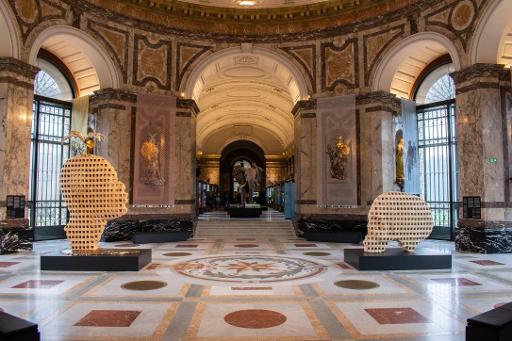The big dome in the Africa Museum in Brussels has been renovated, museum management announced on Thursday.
The dome had been criticised after the museum’s attempt to reduce references to colonialism.
During the renovation, they considered removing the colonial statues from the niches in the room. However, Heritage services pointed out that they were an integral part of a listed building.
The management therefore decided to add elements to adapt the message rather than take elements away.
A competition was held to find an African artist to create a work of art that would counterbalance the colonial statues.
Congolese artist Aimé Mpane was selected by the jury for her piece “New life or Burgeoning Congo,” a lattice wood statue which was then placed in the 'Grande Rotunda' just before the museum reopened in December 2018.
“This project is perfectly in accordance with what I want to do: leave our colonial past behind for a new vision of the future that both goes beyond and appeals to our collective memory,” the artist explains.
But many visitors have said they don’t understand why the colonial statues have been kept and a United Nations work group ruled the museum’s reorganisation had not gone far enough.
Aimé Mpane therefore offered to create a second statue for the room. The second statue, also in lattice wood, is of the skull of chief Lusinga, who was beheaded by a Belgian official in 1884.
His severed head was then taken to Belgium. “A single statue wasn’t enough, we saw that in the visitor’s reactions,” admitted Bruno Verbergt, the operational director of public services.
The two wooden statues now sit opposite each other: one represents death and the violence of the past and the other dignity and promise for the future.
To complete the project, Aimé Mpane asked her Belgian colleague Jean Pierre Müller to join a project she is working on and create a set of 16 semi-transparent veils, which would be hung at a distance from the statutes.
They would have contemporary images as well as images of pre-colonial Africain culture printed on them. “The museum left me completely free to do what I wanted,” said Aimé Mpane.
Both artist and museum managers are convinced they have taken another significant step in the decolonisation process, but they are aware there will still be some critics.
The Brussels Times

